Then And Now Pictures Show Hawaii's Volcano Eruption Is Eerily Similar To An Event Almost 100 Years Ago
History repeats itself.
Hawaii's Kilauea volcano erupted dramatically earlier this month, spewing lava into residential communities and shooting clouds of ash thousands of feet into the air.
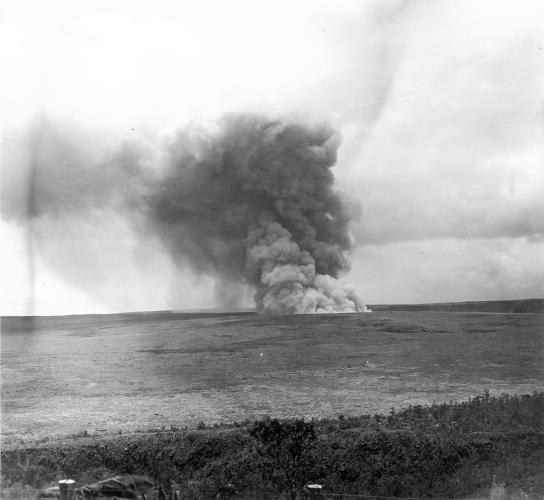
On Thursday morning, the Halemaumau crater, located at the volcano's summit, had its most explosive eruption since 1924.
The US Geological Survey warned last week that explosive eruptions could occur after the crater's lava lake disappeared from sight, threatening to interact with groundwater and creating steam-driven explosions.
Thursday's explosion at the crater sent an ash plume 30,000 feet into the sky, after at least two smaller explosions in recent days.
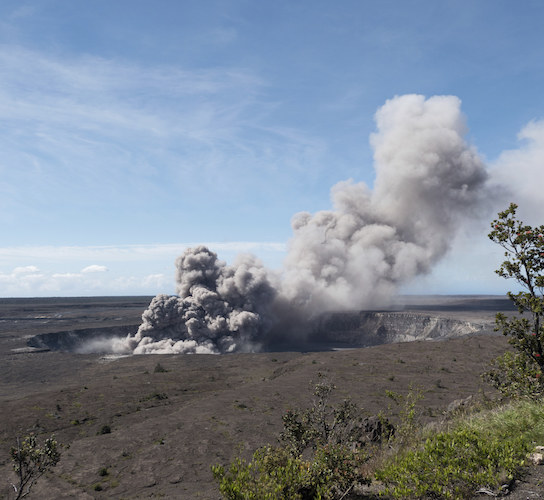
On Thursday morning, the Halemaumau crater, located at the volcano's summit, had its most explosive eruption since 1924.
The US Geological Survey warned last week that explosive eruptions could occur after the crater's lava lake disappeared from sight, threatening to interact with groundwater and creating steam-driven explosions.
Thursday's explosion at the crater sent an ash plume 30,000 feet into the sky, after at least two smaller explosions in recent days.
On Thursday morning, the Halemaumau crater, located at the volcano's summit, had its most explosive eruption since 1924.
The US Geological Survey warned last week that explosive eruptions could occur after the crater's lava lake disappeared from sight, threatening to interact with groundwater and creating steam-driven explosions.
Thursday's explosion at the crater sent an ash plume 30,000 feet into the sky, after at least two smaller explosions in recent days.
Photos of the eruption captured Thursday showed a large ash cloud that was remarkably similar to an event more than 90 years ago.
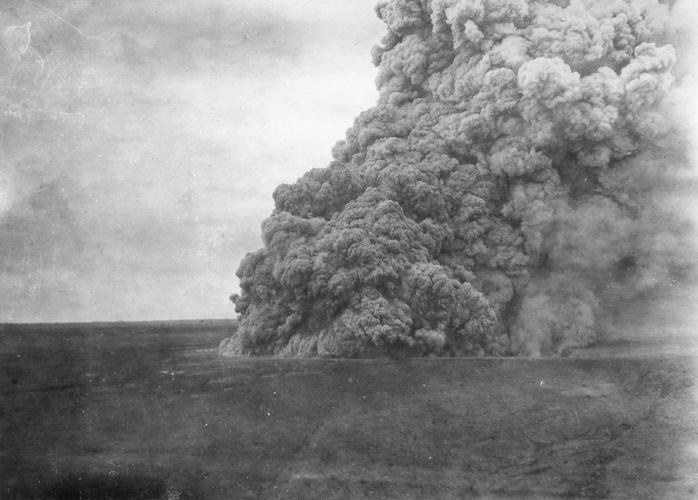
In 1924, the last time Kilauea had an explosive eruption, the lava lake also drained from sight and was followed by a swarm of earthquakes.
This year, Hawaii's Big Island has been hit by thousands of earthquakes, alerting the USGS that something was brewing at the summit. Just like in 1924, the magma had moved down an area called the East Rift Zone to the lower Puna district and cracked the floor.

In 1924, the last time Kilauea had an explosive eruption, the lava lake also drained from sight and was followed by a swarm of earthquakes.
This year, Hawaii's Big Island has been hit by thousands of earthquakes, alerting the USGS that something was brewing at the summit. Just like in 1924, the magma had moved down an area called the East Rift Zone to the lower Puna district and cracked the floor.
In 1924, the last time Kilauea had an explosive eruption, the lava lake also drained from sight and was followed by a swarm of earthquakes.
This year, Hawaii's Big Island has been hit by thousands of earthquakes, alerting the USGS that something was brewing at the summit. Just like in 1924, the magma had moved down an area called the East Rift Zone to the lower Puna district and cracked the floor.
During both events, large cracks in the ground were found scattered across the region following hundreds of earthquakes.
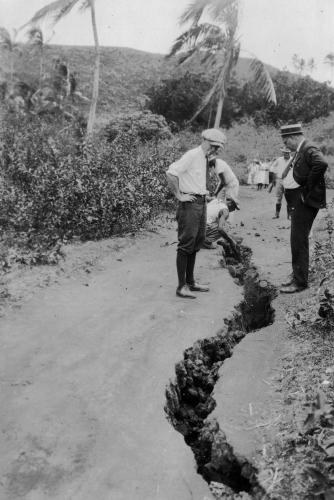
In May 1924, the Halemaumau crater experienced more than 50 explosive eruptions spanning a period of two and a half weeks. The USGS said that a similar event might happen in 2018 and that this week's explosions were only the start.
"We may have additional larger, more powerful events, kind of like what we saw earlier this morning," USGS geologist Michelle Coombs said at a news conference on Thursday.
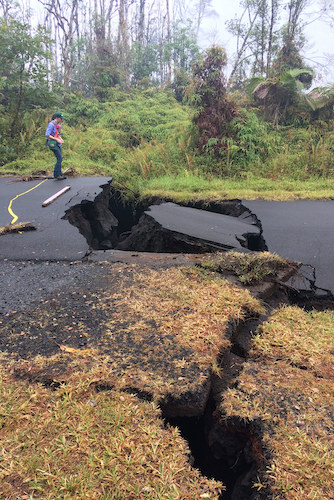
In May 1924, the Halemaumau crater experienced more than 50 explosive eruptions spanning a period of two and a half weeks. The USGS said that a similar event might happen in 2018 and that this week's explosions were only the start.
"We may have additional larger, more powerful events, kind of like what we saw earlier this morning," USGS geologist Michelle Coombs said at a news conference on Thursday.
In May 1924, the Halemaumau crater experienced more than 50 explosive eruptions spanning a period of two and a half weeks. The USGS said that a similar event might happen in 2018 and that this week's explosions were only the start.
"We may have additional larger, more powerful events, kind of like what we saw earlier this morning," USGS geologist Michelle Coombs said at a news conference on Thursday.
Here, pictures from 1924 and 2018 show a giant ash plume emerging from Halemaumau crater with vehicles in the foreground.

A black-and-white photo from May 9, 1924, showed a car near the rim of Halemaumau crater, while another other image — taken almost a century later on May 15, 2018 — showed a man driving a golf cart at Volcano Golf and Country Club as a plume of ash shoots into the air.
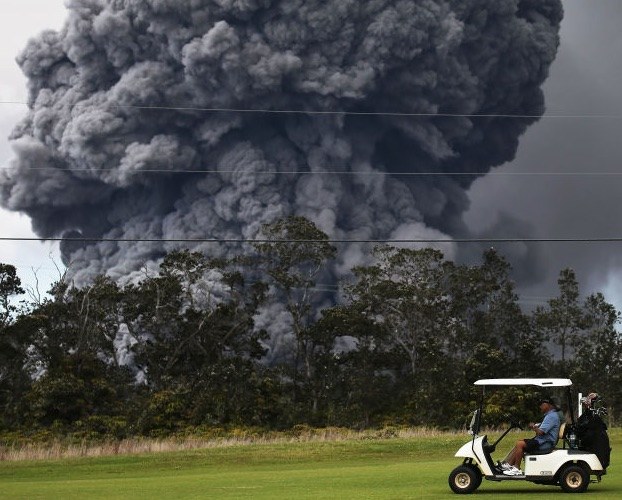
A black-and-white photo from May 9, 1924, showed a car near the rim of Halemaumau crater, while another other image — taken almost a century later on May 15, 2018 — showed a man driving a golf cart at Volcano Golf and Country Club as a plume of ash shoots into the air.
A black-and-white photo from May 9, 1924, showed a car near the rim of Halemaumau crater, while another other image — taken almost a century later on May 15, 2018 — showed a man driving a golf cart at Volcano Golf and Country Club as a plume of ash shoots into the air.
These photos show spectators watching giant ash plumes rise from Halemaumau crater almost 100 years apart.
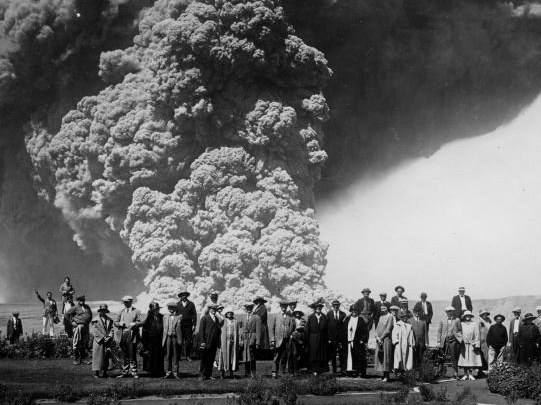
The black-and-white photo was taken at Volcano House hotel and shows visitors who traveled to Hawaii by steamboat posing for a photo on May 24, 1924, while an ash plume rises from the crater. After the photo was taken, the tourists were warned by the then-director of the Hawaii Volcano Observatory that it was unwise to remain there, according to the USGS.
The color photo from this week shows people gathering to watch an ash plume from Volcano Golf and Country Club, which is about two miles from the crater. Visitors and residents have been warned to stay away from the area near the summit and to be wary of volcanic ash in the surrounding neighborhoods.
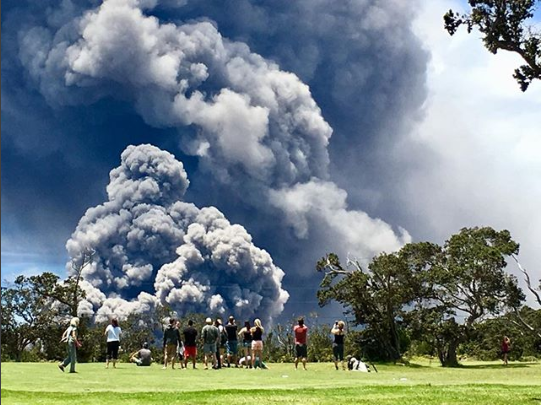
The black-and-white photo was taken at Volcano House hotel and shows visitors who traveled to Hawaii by steamboat posing for a photo on May 24, 1924, while an ash plume rises from the crater. After the photo was taken, the tourists were warned by the then-director of the Hawaii Volcano Observatory that it was unwise to remain there, according to the USGS.
The color photo from this week shows people gathering to watch an ash plume from Volcano Golf and Country Club, which is about two miles from the crater. Visitors and residents have been warned to stay away from the area near the summit and to be wary of volcanic ash in the surrounding neighborhoods.
The black-and-white photo was taken at Volcano House hotel and shows visitors who traveled to Hawaii by steamboat posing for a photo on May 24, 1924, while an ash plume rises from the crater. After the photo was taken, the tourists were warned by the then-director of the Hawaii Volcano Observatory that it was unwise to remain there, according to the USGS.
The color photo from this week shows people gathering to watch an ash plume from Volcano Golf and Country Club, which is about two miles from the crater. Visitors and residents have been warned to stay away from the area near the summit and to be wary of volcanic ash in the surrounding neighborhoods.
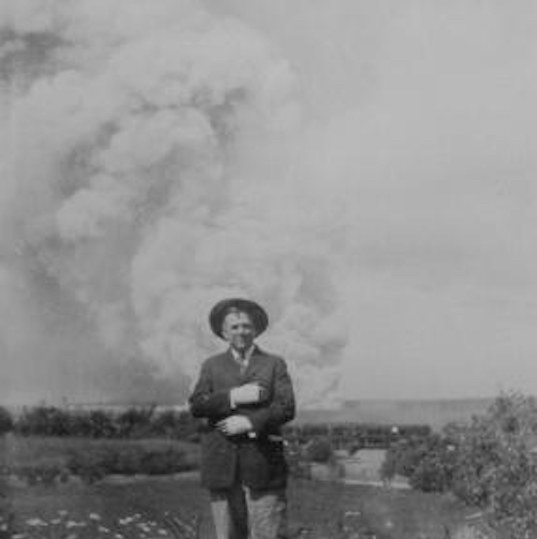
The black-and-white photo shows park superintendent Thomas Boles on May 14, 1924. Just the day before this photo was taken, he narrowly escaped an explosion, falling and cutting his hands and knees while trying to flee, according to the USGS. After his close call, he banned visitors from coming within two miles of the crater.
The color photo, posted Thursday, shows a woman taking a selfie in front of the eruption.
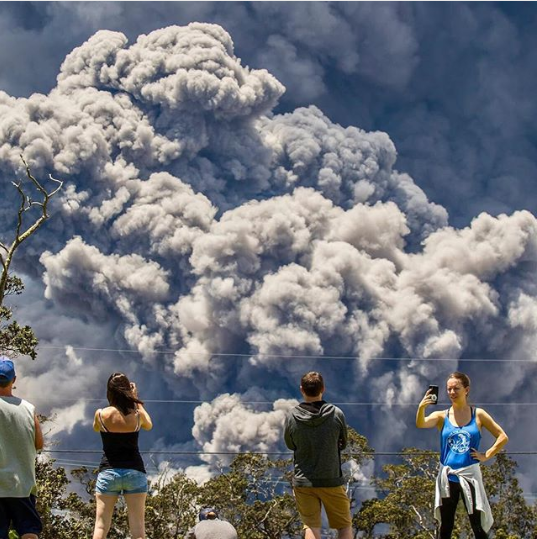
The black-and-white photo shows park superintendent Thomas Boles on May 14, 1924. Just the day before this photo was taken, he narrowly escaped an explosion, falling and cutting his hands and knees while trying to flee, according to the USGS. After his close call, he banned visitors from coming within two miles of the crater.
The color photo, posted Thursday, shows a woman taking a selfie in front of the eruption.
The black-and-white photo shows park superintendent Thomas Boles on May 14, 1924. Just the day before this photo was taken, he narrowly escaped an explosion, falling and cutting his hands and knees while trying to flee, according to the USGS. After his close call, he banned visitors from coming within two miles of the crater.
The color photo, posted Thursday, shows a woman taking a selfie in front of the eruption.
Nearly a hundred years ago when Halemaumau explosively erupted, rocks as heavy as 14 tons were thrown from the crater.
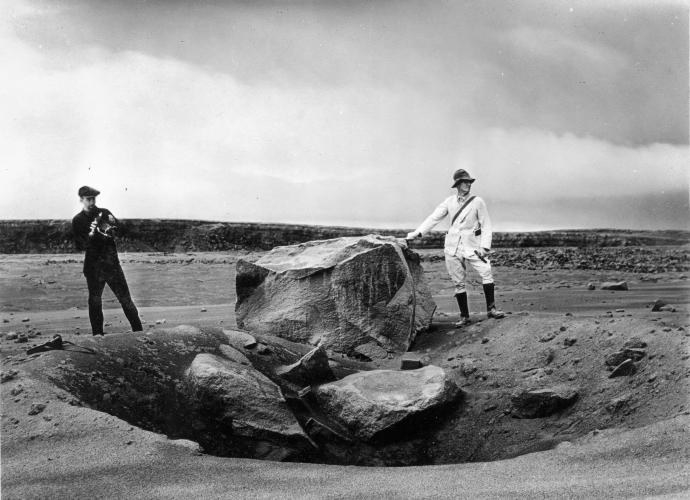
So far, rocks as big as 2 feet across have been found tossed from the crater. Even bigger rocks may have been expelled, but scientists have not inspected the area around the crater since Thursday's explosion because of safety concerns.


Despite the similarities between the two events, some things were very different. Hawaii's Big Island used to transport sugarcane from plantations to the ocean, where steamships could pick up the sweet cargo. This photo from April 23, 1924, shows rail tracks damaged by cracks in the Kilauea volcano's lower East Rift Zone.

Prior to 1924, the last time an explosive eruption occurred at Kilauea is believed to have been in 1790. The volcano likely went through a period in previous centuries where it had many explosive eruptions.
